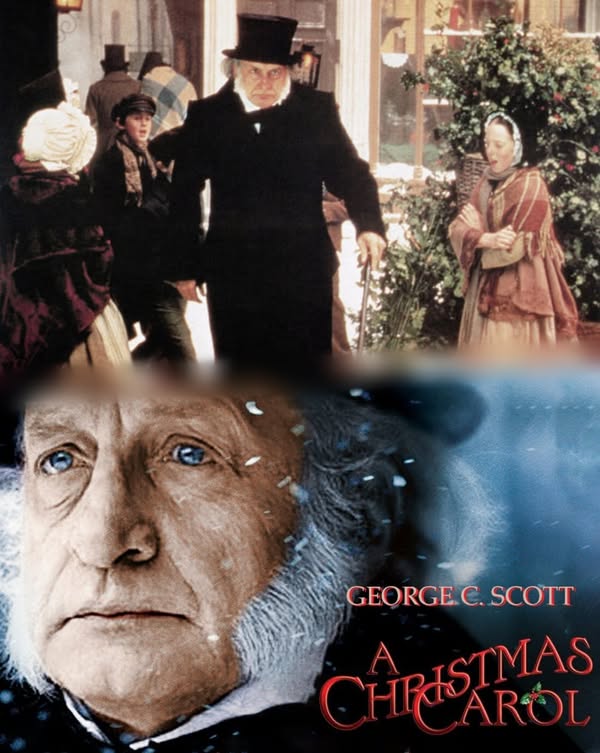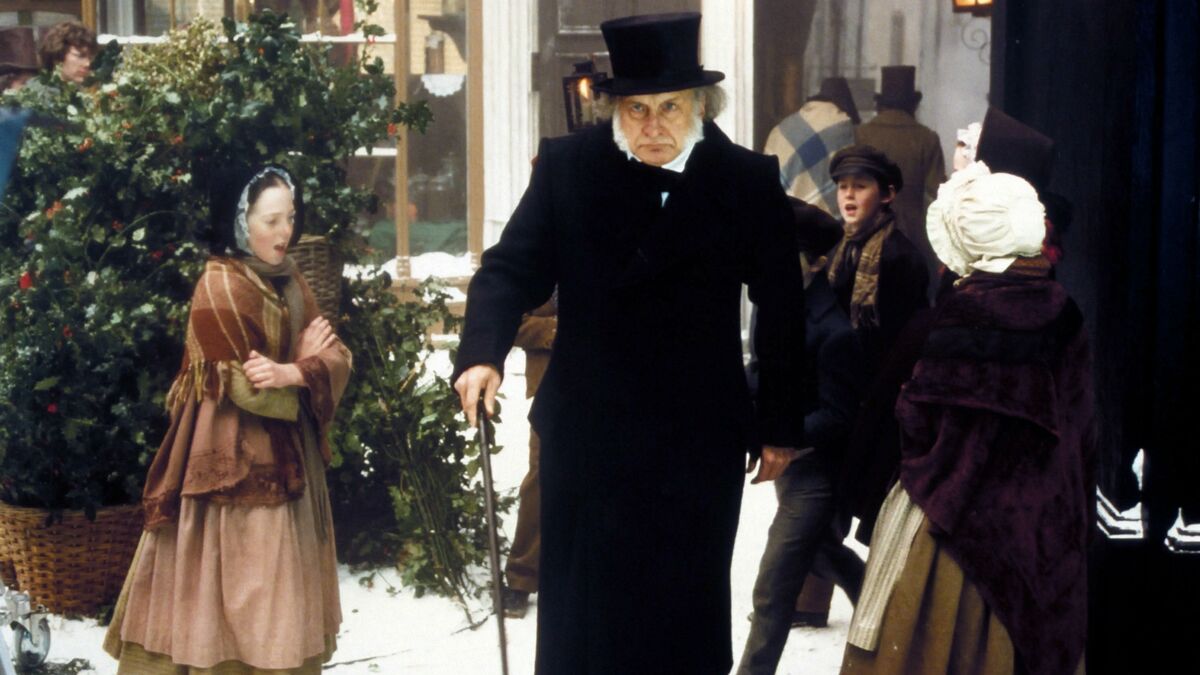🎬 A Christmas Carol (1984)

Related Movies:
Related Movies:
Related Movies:
A Christmas Carol (1984) — A Haunting Yet Heartwarming Revival of Dickens’s Timeless Tale
“A Christmas Carol” by Charles Dickens is one of the most enduring stories in literature, captivating generations with its powerful message of redemption, compassion, and the true spirit of Christmas. Among the many adaptations that bring this classic tale to life, the 1984 film version starring George C. Scott stands out as one of the most faithful and emotionally resonant. Combining haunting atmospheres with a tender exploration of human transformation, this adaptation remains a beloved holiday favorite that continues to warm hearts decades after its release.

The Timeless Legacy of Dickens’s Masterpiece
First published in 1843, A Christmas Carol was Dickens’s response to the social and economic challenges of Victorian England. At a time when poverty and inequality were rampant, Dickens crafted a poignant story centered around Ebenezer Scrooge, a miserly old man whose cold heart is transformed after supernatural visits on Christmas Eve. The novella is both a moral fable and a sharp social critique that highlights the consequences of selfishness and the redeeming power of kindness and generosity.
The tale’s impact transcends its Victorian context, becoming a universal story about human nature and the possibility of change. Its characters — from the ghostly Marley to the three spirits of Christmas Past, Present, and Yet to Come — have become cultural icons. The story’s enduring popularity has inspired countless stage plays, films, television adaptations, and even musical renditions.
The 1984 Adaptation: A Faithful and Darker Retelling
Directed by Clive Donner, the 1984 adaptation of A Christmas Carol is widely praised for its commitment to Dickens’s original tone and narrative. Unlike some versions that soften the darker elements for a family audience, this film embraces the eerie, sometimes unsettling atmosphere of the novella, giving viewers an experience that is both chilling and deeply moving.
George C. Scott’s portrayal of Scrooge is a masterclass in nuanced acting. His Scrooge is not a caricature of greed but a complex man hardened by loss and isolation. Scott’s stern gaze and carefully measured expressions convey a man who has built walls around his heart, making his eventual transformation all the more powerful and believable.

The film’s visual style adds to its mood — bleak, foggy streets, cold interiors, and dim candlelight set the stage for a story that feels as much about confronting inner demons as it is about festive cheer. The ghostly figures are crafted with subtlety and restraint, avoiding cheap scares while maintaining a genuine sense of supernatural dread.
The Haunting Presence of the Spirits
One of the most memorable aspects of this adaptation is its depiction of the spirits that visit Scrooge. Jacob Marley, portrayed with a sorrowful intensity, appears bound in chains forged from his own misdeeds, serving as a grim warning to Scrooge. The three Christmas spirits — Past, Present, and Future — are presented with distinct personalities and moods that reflect their symbolic roles.
The Spirit of Christmas Past guides Scrooge through memories that reveal his lost innocence and choices that led him down a lonely path. The Spirit of Christmas Present is warm yet fleeting, showing Scrooge the joy and struggles of others in the here and now, especially the humble Cratchit family and their ailing son, Tiny Tim. Finally, the Spirit of Christmas Yet to Come casts a silent, ominous shadow over Scrooge’s future, portraying a fate marked by regret and loneliness if he does not change his ways.
This film uses light, shadow, and music masterfully to enhance the supernatural experience without resorting to excessive special effects. The spirits’ appearances are eerie but elegant, evoking a sense of awe and introspection rather than terror.
The Heart of the Story: Redemption and Humanity
At its core, A Christmas Carol is about redemption — the possibility that no matter how far one has fallen, change and hope are always within reach. Scott’s Scrooge embodies this journey from bitterness to benevolence. The film carefully traces his emotional arc, making the moments of self-realization and repentance deeply affecting.
Scrooge’s interactions with the Cratchit family, especially Tiny Tim, humanize him and highlight the consequences of his greed. The tender scenes where Scrooge embraces the spirit of Christmas, finally reaching out to help those around him, underscore the story’s message of compassion and community.

The film also offers a timeless lesson about the value of empathy and generosity. It reminds audiences that the true meaning of Christmas is not in gifts or material wealth but in kindness, family, and connection.
Critical Reception and Enduring Influence
Upon its release, A Christmas Carol (1984) was lauded for its performances, atmosphere, and fidelity to Dickens’s text. Critics and audiences alike appreciated the film’s balance of darkness and warmth, noting that it neither trivializes nor sensationalizes the source material.
Over the years, this version has become a staple of holiday viewing for many families. Its ability to engage both children and adults with its rich storytelling and emotional depth makes it stand out among countless adaptations.
Moreover, the 1984 film continues to influence newer versions of the story, setting a benchmark for how to capture the spirit and substance of Dickens’s classic tale with respect and artistry.

Conclusion
*George C. Scott’s A Christmas Carol (1984) remains a shining example of how classic literature can be transformed into compelling cinema. With its haunting visuals, powerful performances, and enduring message of hope, this film invites viewers to reflect on their own lives and the meaning of generosity.
Whether watched as a yearly holiday tradition or discovered anew, it offers a timeless reminder that even the coldest heart can be warmed, and even the loneliest soul can find redemption. For anyone seeking a Christmas story that balances chills with heartfelt emotion, this adaptation is an unforgettable experience.











